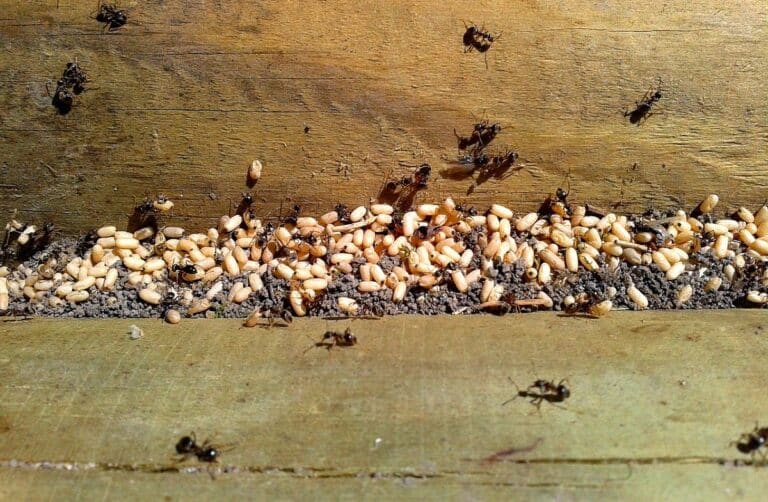As a gardener, you’ve likely spotted ants marching to and fro across your garden beds. And if you’ve peered a little closer, you may have noticed some of them toting small white objects This sight often spurs alarm and questions about what exactly they could be transporting But before you jump to conclusions, read on to find out what’s really going on.
It’s Probably Not Eggs
When ants are spotted carrying white spherical objects, many gardeners assume they must be eggs. However, ant eggs are microscopic – barely visible to the naked eye. The white particles ants carry are far too large to be eggs. So what are they?
It’s the Pupa Stage
The white particles being transported are actually ant pupae. The pupal stage is part of complete metamorphosis in ants. After hatching from the egg as a larva, the ant goes through several larval stages. Then it forms a protective pupal case and transforms into an adult inside it.
Worker ants carefully transport these pupae during the vulnerable transformation process This explains the colony’s mobilization when the nest is disturbed. The workers hurry to move the developing young to safety
Why the Confusion?
It’s an easy mistake to confuse the pupal stage with eggs. Both are small oval and white in color. But ant eggs are only 0.3-0.5mm, while pupae range from 2-6mm. Eggs are also immobile, whereas pupae can be carried.
Larvae Come First
To understand the sequence, remember larvae hatch from eggs. These worm-like legless larvae are completely dependent on worker ants for food and care. Only once they are mature do larvae form pupae for their metamorphosis into winged reproductive adults.
An Essential Process
The pupal stage may seem fragile, but it is a crucial step in the ant life cycle. Inside the protective shell, the larva essentially dissolves itself, then rebuilds into an adult ant. When this transformation is complete, the adult chews its way out and joins the colony.
Formidable Defenses
Ants have evolved impressive defenses to protect their vulnerable young. When disturbed, workers immediately pick up pupae in their jaws and rapidly carry them to a backup nest. Some species even have specialized soldiers with larger heads and jaws solely for transporting pupae.
A Sight of Hope
Seeing ants ferry pupae can be alarming if you fear they are infesting your garden. But it also signifies a healthy colony reproducing. And ants play important ecological roles like aerating soil, dispersing seeds, and eliminating pests. So while ants can sometimes be pesky, a glimpse of their reproductive process is a reminder of nature’s intricate miracles.
Frequently Asked Questions
What are the white particles ants carry?
The white particles ants carry are pupae – the transitional stage between larva and adult. The pupal casing protects the developing ant as it transforms inside.
Why do ants move their pupae?
Ants carefully transport pupae to protect them when the nest is disturbed or damaged. Moving them to safety ensures the next generation survives.
How can you tell ant pupae from eggs?
Ant eggs are microscopic, around 0.3-0.5mm. Pupae range from 2-6mm, large enough for worker ants to carry. Eggs are also immobile, while pupae can be transported.
What do ant larvae look like?
Ant larvae are tiny, worm-like, and legless. They are completely dependent on worker ants to feed and care for them until they form pupae. Larvae look nothing like the mobile white pupae ants carry.
Why do ants suddenly start carrying white things?
When ants rapidly begin transporting white particles, it means their nest has likely been disrupted. The white particles are pupae being evacuated to a backup nest location for safety.
So rest assured, those tiny white blobs being bussed around your garden are not a sprinkling of eggs. They’re juvenile ants mid-transformation! With a better understanding of the pupal stage, you can take ants’ hectic hurry in stride.
Where Are the Ants Carrying All Those Leaves? | Deep Look
- The Ultimate Guide to Growing Strawberries in Raised Beds - August 8, 2025
- No-Dig Garden Beds: The Easiest Way to Grow a Beautiful Garden - August 6, 2025
- How to Protect and Preserve Wood for Raised Garden Beds - August 6, 2025

